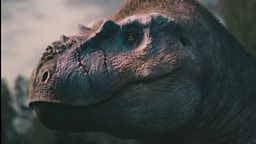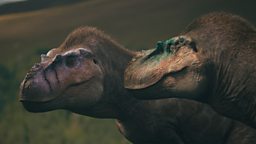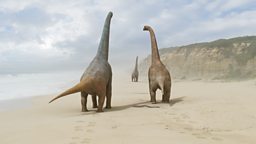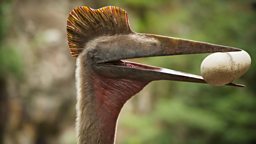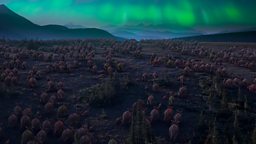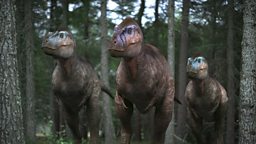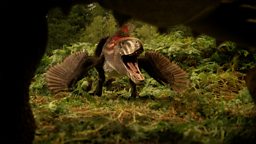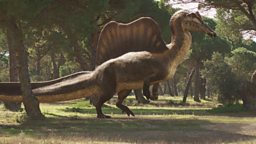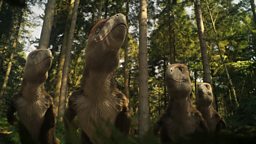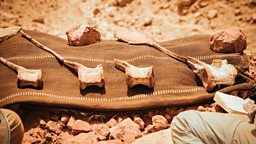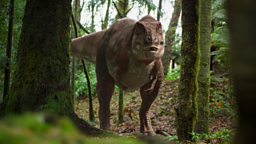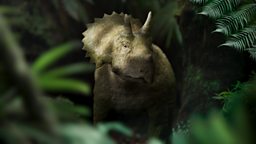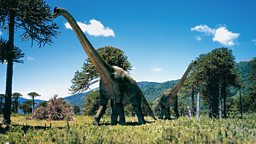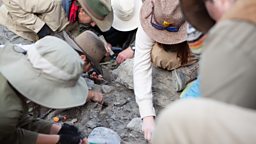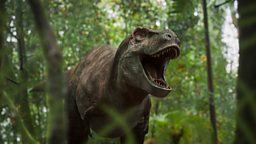Dino guide: Creating Albertosaurus
by Jay Balamurugan, series assistant producer
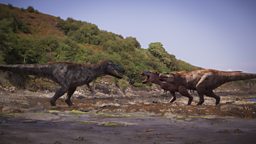
At its heart, Walking with Dinosaurs tells the stories of 6 individual dinosaurs, 6 characters, each with rich lives, with challenges to face and victories to win.
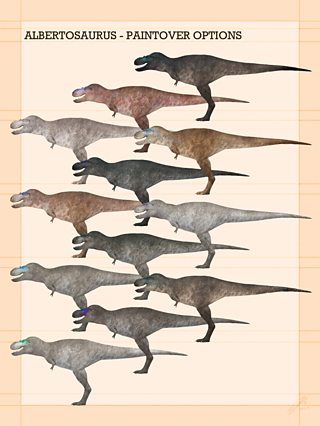
In The Pack, Rose the Albertosaurus finds herself at a pivotal moment. Her pack is starving, the hunt is on, and she must play her part to perfection to ensure their survival. Will she succeed?
One of the most important things for us to convey in each episode was a sense of character. After all, each of these dinosaurs did actually live on Earth millions of years ago. We wanted audiences to fall in love with them, to cry when they struggled, and to cheer when they succeeded.
This ethos wasn’t just restricted to how we shaped the narratives and scripts, it influenced how we designed our dinosaurs too. It was important to us that we always knew who we were following in the story, because otherwise, things could get confusing pretty quickly! Especially when our hero regularly shares the screen with multiple other Albertosaurus.
But of course, we couldn’t just slap on a different coat of paint on a dinosaur and call it a day. We wanted our animals to be distinct while being true to the science. In the episode, each member of Rose’s pack looks different from the rest. This is actually something that can be seen in the natural world today. Some reptiles and birds exhibit polymorphism – this is when individuals in a single species exhibit different traits from each other, such as different colours on body parts between individuals.
Colour polymorphism appears in over 300 bird species and is especially common in birds of prey such as hawks. Even multiple different eye colours can appear within a single species – like we see in blackbirds and hornbills.
We may never know the specifics of Albertosaurus colouration, but looking to their living cousins is the next best thing – and just like some of those birds, we designed each member of the Albertosaurus pack to have different body colours ranging from saturated sandy browns to dark greys and almost whites, and one of two potential eye colours, a light blue or a rich amber!
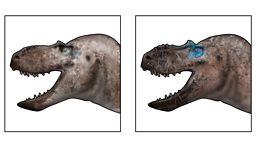
But what about those splashes of colour around their faces? When I initially spoke to palaeontologists Mark Powers and Henry Sharpe about what our animals should look like, they described how the crests in front of the eyes of Albertosaurus were likely used for social signalling. After all, when you live in a pack, you’ve got to find ways to recognise each other.
Each felt like an individual with their own personality and story
These crests have bone cores but were covered in life by a layer of keratin, the same stuff that makes up our fingernails or the beaks of birds. We know from birds that keratin can be a wide range of colours, and Henry, being a palaeoartist himself, provided us with an initial design for our Albertosaurus, with vibrant blues around their crests.
I took this idea and riffed on it to produce a selection of options ranging from Rose’s lilac crests, all the way to the pack matriarch’s deep teal crests.
By the end of the design stage, we had a selection of unique Albertosaurus, distinct from each other. Each felt like an individual with their own personality and story, as they must have been when they were alive 71 million years ago. It is one of the greatest privileges to be able to tell their stories, and I certainly hope that we have done them justice.
